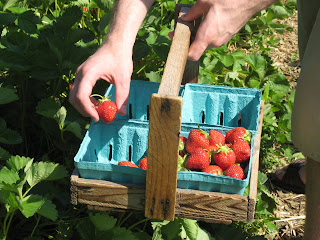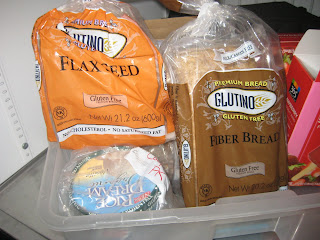Wouldn't smoothies be a wonderful snack option at school, especially when the days are still warm? Smoothies can be packed with ingredient rich in vitamins, minerals, fiber, and protein. They're perfect for a quick break. I made a smoothie 2 weeks ago to “test” it out, and I enjoyed it so much I’ve had one almost everyday since.
I start with a base recipe of non-fat plain yogurt, orange juice, and frozen, ripe bananas, which I accumulate in my freezer since they’re nice to have around for banana bread, (or now, for smoothies). Next, I add whatever fruit I have on hand. Last week I used strawberries, today mango. Everything goes into a large measuring cup, and I buzz it with my immersion stick blender until smooth.
For two one-cup servings, use about ¾ cup of yogurt, half cup of orange juice, and one large banana. For today’s mango smoothie, I scooped out the flesh of half a large mango. The smoothie was so sweet, I threw in a dozen cranberries from my freezer. As you can see, the recipe is extremely free-form and you can adjust ingredients and their quantities as you see fit.
Local peaches are available from my local farm in September, so they will surely make it into my school smoothies then. I bet they’ll sell out during snack time.










